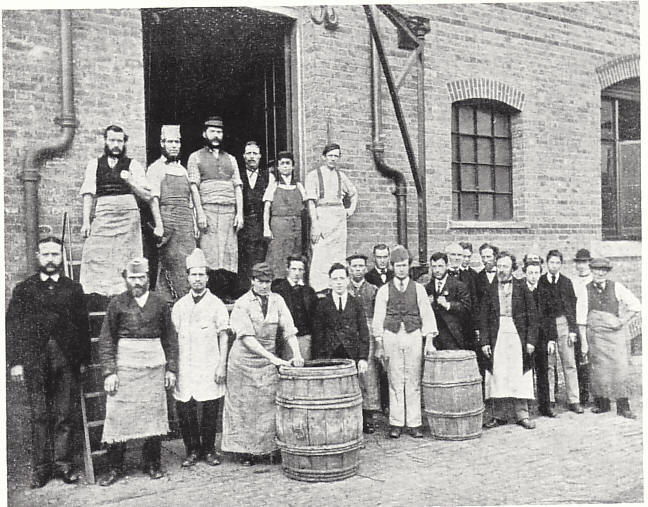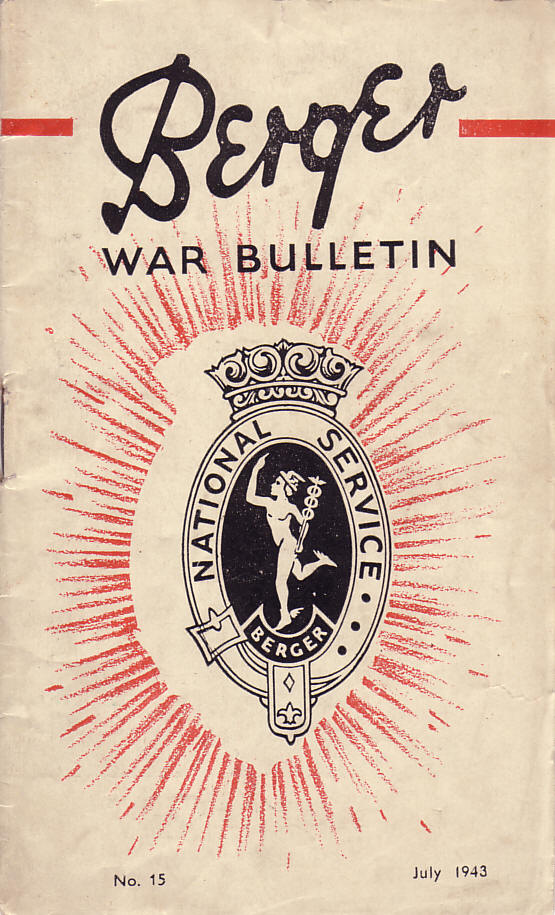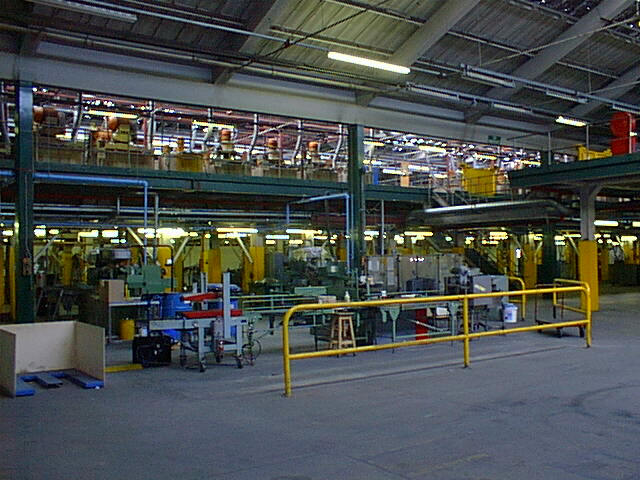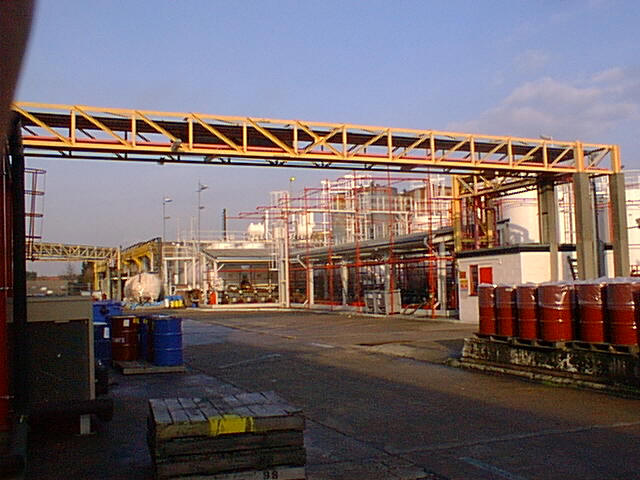| The History and Origins of the Old Paint Company ~ Lewis Berger & Sons | |||||||||||
| HISTORY / OVERVIEW | |||||||||||
| LEWIS BERGER & SONS | |||||||||||
|
Louis Amelius Christanus Adolphus Steigenberger, a chemist from Frankfurt, came to London in the mid-eighteenth century at the age of nineteen. He had perfected a method, new to the world then, of manufacturing Prussian Blue. He died on 25th March 1814 at the age of seventy three and was buried in St John's churchyard Hackney. |
|||||||||||
|
He began operations in London in 1760. Originally he lived with his brother John and his family at Shadwell in East London and at Narrow Street, Limehouse. Both Lewis and John are described at ‘colour makers’. In 1773 they moved to the Market Square, Shadwell. An order in 1772 from Dublin was addressed to Lewis Berger, "Blue Maker" and the order was for: Blue Rose, Pink, Blue Venditer, Idigo and Gum Boeage. By 1790 was selling nineteen different pigments as well as Black Lead, Sulphur, Sealing Wax and Mustard. Lewis Berger, his wife and six children moved to Homerton in 1780 and a family home was built to the north of the factory. His name appears in the records of the Old Bailey as a victim of theft/burglary on three occasions[3/6/1778, 13/9/1780 & 11/5/1796] The site in Water Lane [now Morning Lane] was chosen as the waters in Hackney were so pure ! The water referred to in the early records was a simple well [Well Street, a few meters from the old site still exists today]. As production grew, an artesian well was drilled in the 1800's. |
|||||||||||
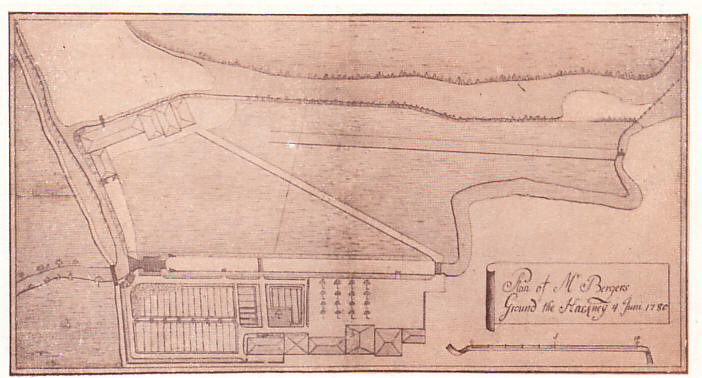 |
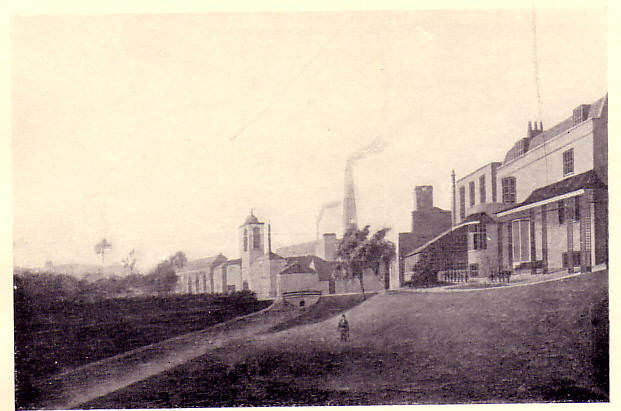 |
||||||||||
|
Old plan of the Berger factory dated 1780 |
Berger House from an oil painting early 18th century |
||||||||||
|
In the background of the print of the family home can be seen the old Berger clock tower. Below is a photo of the original an old clock tower in the factory which was re-built in 1880 and was part of the dry grinding section of the dry colour area. The latter incorporated the original clock and roof and was still in existence when the Homerton plant closed in1958. |
|||||||||||
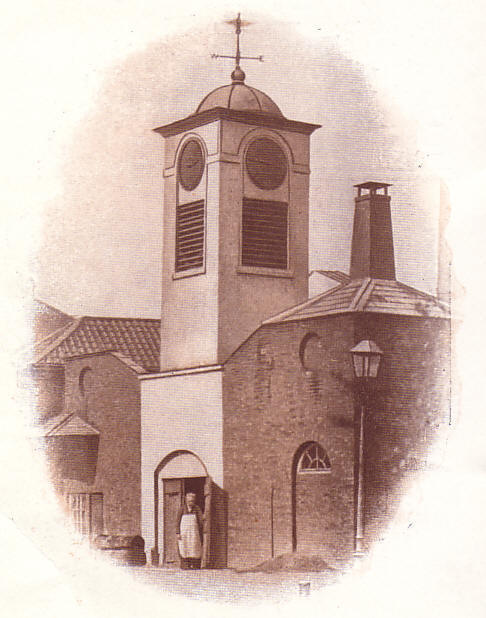 |
|||||||||||
| The original Berger clock tower which stood at the southeast corner of the colour works. | |||||||||||
|
The man in the doorway of the original clock tower was a factory hand named J.Blindell who had 70 years continuous service with the company. |
|||||||||||
|
|
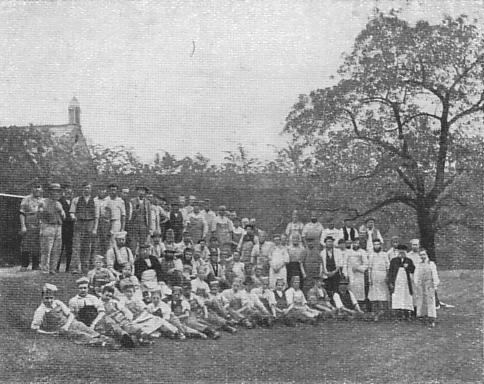 |
||||||||||
|
Warehouse and Office staff .. about 1870 |
A group of Berger employees on the lawn of Berger House . about 1870 |
||||||||||
|
|
|
||||||||||
|
In the 1785 premises were also purchased in Well Court, Queen Street, Cheapside, with a view to keep in touch with the City and export trade to augment the offices at Homerton. This part of the company was run by Lewis Berger's two sons ~ John and Samuel. In 1814 Lewis Berger died and the two sons took over the running of the Homerton factory. They were 'hands on' owners and the souvenir booklet 'A Notable Record' informs us that 'they were daily to be seen dressed in white smocks and brown paper caps'. |
|||||||||||
| There is a copy of a report by the first representative [Mr J. Tennant]dated 4th August 1775 | |||||||||||
|
|
|||||||||||
|
There hopefully remains [somewhere], and probably with an asset stripper, several early customer orders. In 1778 a Mrs Frances Walker of Leeds, purchased 2lb of Prussian Blue at 12/-. There were records of early customers from all over England and he had at least one representative in York. In 1879-9 the most expensive product sold was Drop Lake at 80/- a pound.[ What's that in today's money ? ].
As recently as the 1980s the company archives had records of receipts dating from 1773 through into the 1800’s including one from the artist J.M.W.Turner around 1838, which was the time he painted 'Lucerne and it's Lake' and Turners favourite ‘The Fighting Temeraire’ ~ he referred to this painting as 'his darling' and always refused to sell it. The Doulton factory in Lambeth also purchased some of his paints for decorating their pottery. These receipts/records seemed to have disappeared with the sell-off of the decorative business. |
|||||||||||
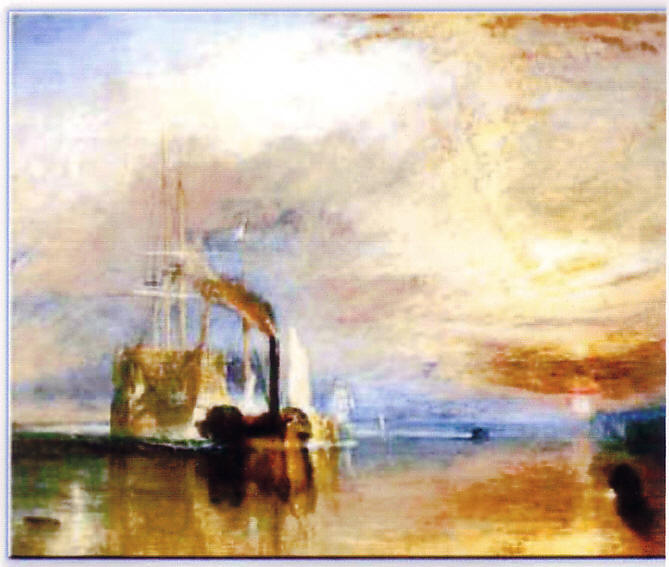 |
|||||||||||
|
When Lewis Berger & Sons became a limited company in 1879, it was the founder's great-grandson, Arthur John Berger, who was made Managing Director. In all the official histories of the company he is hailed as an innovative and resourceful businessman whose resignation in 1894 was regarded as a great loss to the firm. In fact, however, Arthur Berger was sacked by the board of directors for his gross mishandling of the company’s affairs. Despite getting rid of the unfortunate Arthur, the company’s fortunes continued to decline to the point where in 1904 Walter Cottingham of the Sherwin Williams company bought out the shareholders at a third of the company’s value. Roger Tamplin writes in the Berger Record circa 1970: If it was not for the fact that Cottingham's son's wife Vera had retained her British citizenship and inherited the company on Cottingham’s death, the company might still be under American control. [Ho, Ho, Ho,] |
|||||||||||
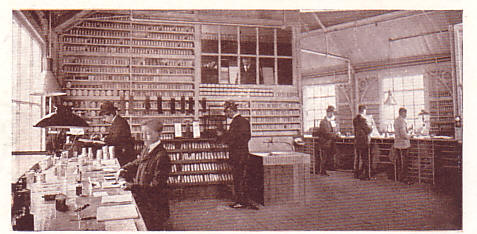 |
|||||||||||
|
Both these pictures date from circa 1909 and appeared in a booklet, published in 1910, celebrating the company's 150th anniversary |
|||||||||||
|
|
|||||||||||
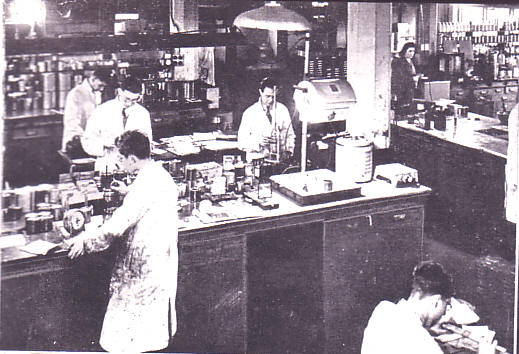 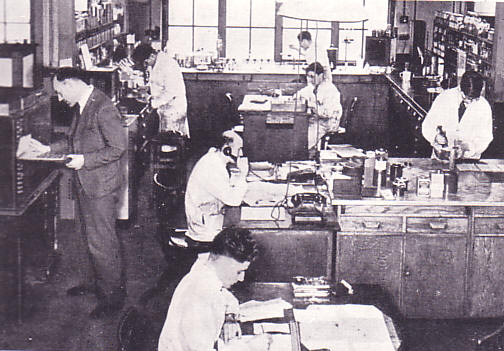 |
|||||||||||
|
Laboratories at Homerton circa 1948 |
|||||||||||
| Below is an early engraving of the site. | |||||||||||
 |
|||||||||||
|
An engraving of the Lewis Berger & Sons Factory and General offices .. Homerton site 1880 ( covering 4 acres 1 rod 22 perches ~ ~ not many people know that ! ) |
|||||||||||
 |
|||||||||||
|
Homerton site circa 1910 |
|||||||||||
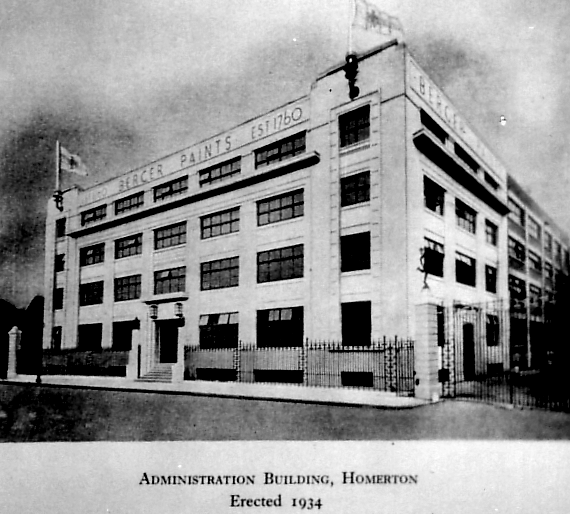 |
|||||||||||
|
The Homerton office and laboratory building ~ built 1934 |
|||||||||||
|
Below is a small booklet, printed on incredibly thin paper and dated July 1943. |
|||||||||||
|
|
|||||||||||
| The opening paragraph is copied out below and appears to have been sent out the the ex-employees in the Forces ~ as if they hadn't got enough problems ! | |||||||||||
|
|
|||||||||||
|
In 1934 the company purchased 29 acres of land in Freshwater Road, Chadwell Heath, primarily to manufacture nitrocellulose systems. The Homerton site had size limitations and in the 1950’s the Chadwell Heath site was expanded to accommodated new offices, paint and resin production plants, laboratories and warehouses on the site. The Homerton site finally closed in 1957. The new site was backed by a loan from Shell Chemicals. |
|||||||||||
|
The new factory straddled Freshwater Road [ not name after any natural freshwater but a local headmaster]. The materials manufactured on the North Side were transferred by means of a tunnel under the road direct to the warehouse on the South Side. The area south of the road also housed a resin unit, low-flash warehouse, adminis-tration offices, company restaurant and initially the company's sports ground complete with football, cricket pitches and tennis courts. These went in the early 1970's as the plant expanded. |
|||||||||||
| The site also housed eight laboratories. Below is a photo of Automotive laboratory staff ~ we think the photo was taken around 1955 ? We can identify all of the them except the guy on the extreme right who we think was some one from one of the Australian companies on secondment. | |||||||||||
|
|
|||||||||||
| During the 1970's the factory site alongside the factory was purchased and converted into a factory for emulsion paints. | |||||||||||
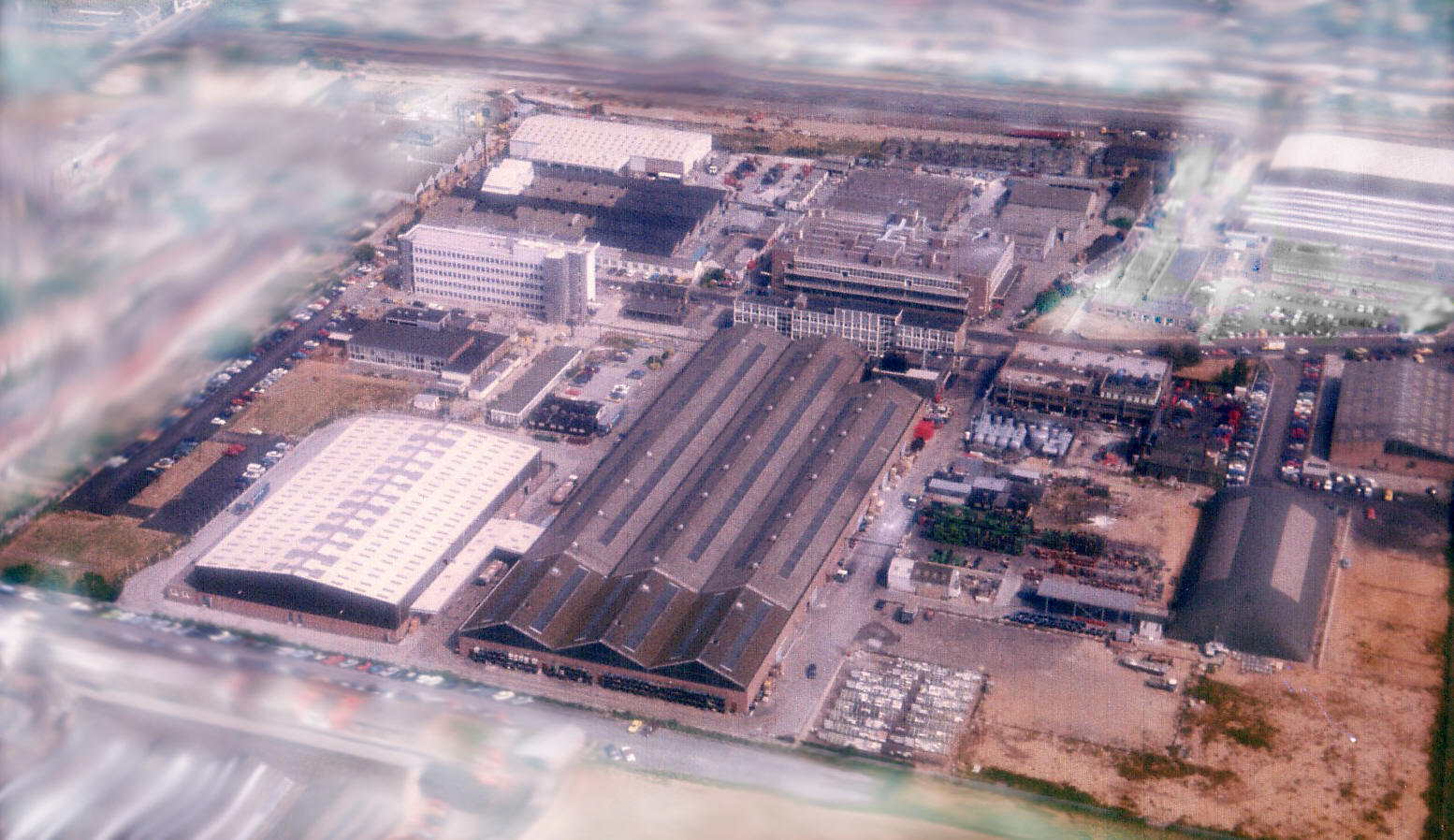 |
|||||||||||
|
Aerial view Chadwell Heath site circa 1978. |
|||||||||||
| Later developments to the above view: | |||||||||||
| The area covered by inflatable warehouse [lower left] was converted to a barrel farm in 1977. | |||||||||||
| In 1992, the exposure racks [lower middle] were moved and the area converted to a tin store. | |||||||||||
| The Spies Hecker training centre was built 1997 on lower left of the above view. | |||||||||||
| When the Decorative Division was sold off to Williams Holdings, a decision was made to close the North Side which housed the Emulsion, Low Flash/Refinish, Protecton, Automotive and Industrial Paints manufacturing areas. | |||||||||||
| The North Side stood empty for until 1988 when demolition began. The emulsion plant came down easy but the No 1 factory built in 1955/6 proved to be more durable than people expected and specialised equipment had to be used to break down the reinforced areas. Demolition was completed in 1988 | |||||||||||
| Selected paint manufacturing equipment was moved to the South Side where a more functional factory was built in area that was originally designed for warehousing [centre of the above picture]. The manufacturing area on the South Side became all low flash. | |||||||||||
|
|
|||||||||||
|
Mixing Tanks and Filling Floor South Side ~ circa 1989 |
|||||||||||
| Paint manufacture at the Carpenters Road site ceased in 1985/6 and equipment and production was transferred from Stratford to Chadwell. | |||||||||||
| During 1985-1986 the tank farm and tanker bays were built to the South of the resin unit with resin and solvent lines pumped to specific areas of the new plant. | |||||||||||
|
|
|||||||||||
|
Tanker Bay, Tank Farm and Resin Unit ~ circa 1989 |
|||||||||||
| At one point, the company gave up its own transport divisions. I should think the number plate below would be worth a fortune to a grandmother with a customised motor | |||||||||||
|
|
|||||||||||
|
The North Side stood empty for until the start of 1988 when demolition began. The emulsion plant came down easy but the No 1 factory built in 1955/6 proved to be more durable than people expected and specialised equipment had to be used to break down the reinforced areas. Demolition was completed at the end of 1988. The site remained empty and unused except for wildlife and desperate courting couples until 2003. |
|||||||||||
| Additional information to the history of Lewis Berger & Sons is most welcome. | |||||||||||
| Hackney Archives have a huge amount of information on Lewis Berger and Sons Ltd | |||||||||||
| Wheel | |||||||||||
| Wheel Special | |||||||||||
|
|
|||||||||||
|
|
|||||||||||
